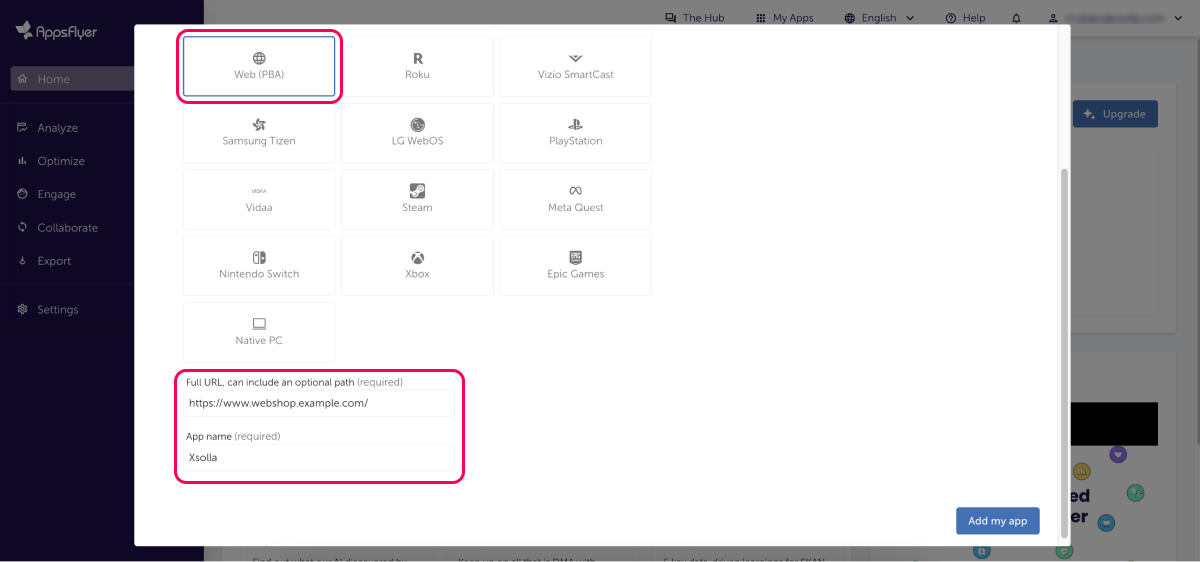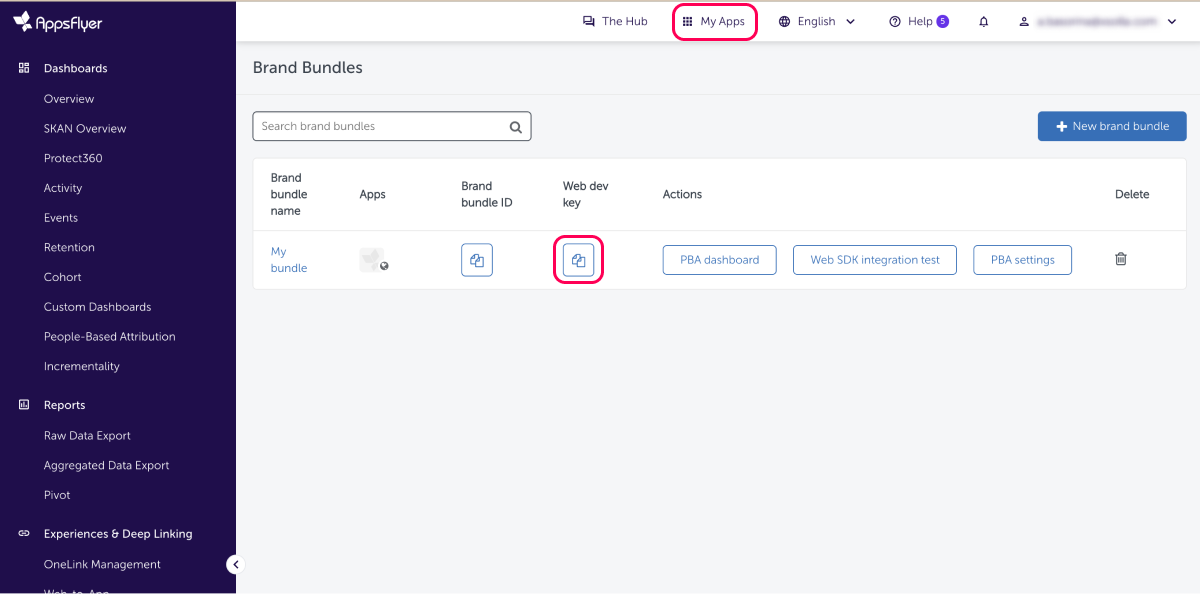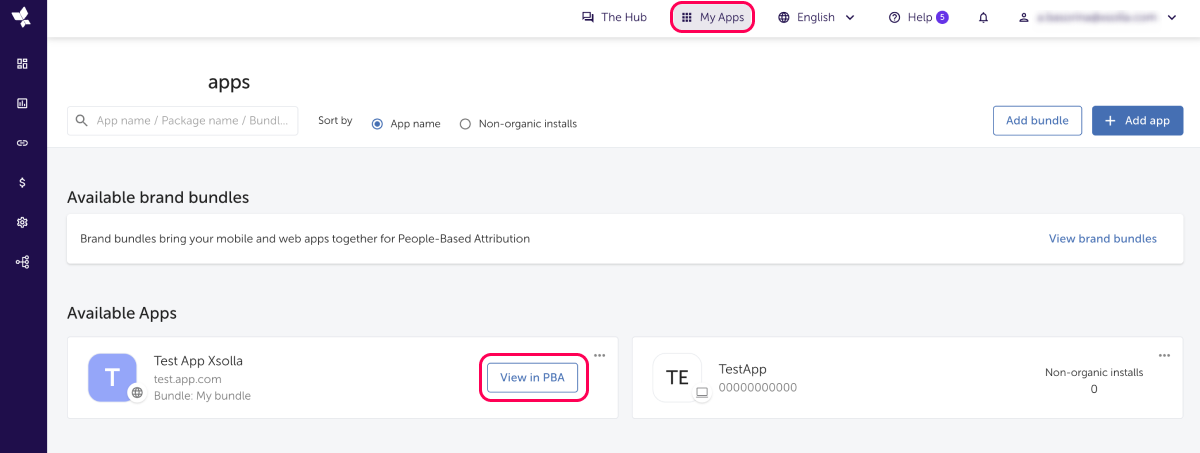Integration with AppsFlyer
Glossary
AppsFlyer
Mobile attribution and marketing analytics platform that enables application developers, marketers, and brands to track and measure the effectiveness of their marketing campaigns across various channels and devices.
Refer to the AppsFlyer documentation for more information about the platform.
Refer to the AppsFlyer documentation for more information about the platform.
Application ID
Mobile application ID, which is unique for each mobile platform (Android, iOS, etc.). The values of application ID specified in Xsolla should match the application ID in AppsFlyer’s My Apps section.
Refer to the Android documentation or Apple documentation for more information about the application ID.
Refer to the Android documentation or Apple documentation for more information about the application ID.
AppsFlyer ID
User ID generated by AppsFlyer.
AppsFlyer web ID
Site ID in the AppsFlyer account, used during Web SDK integration with AppsFlyer and passed in the
webAppId field in web events.App Tracking Transparency (ATT)
Privacy feature introduced by Apple in iOS 14.5 and later versions, which requires applications to ask for user’s permission before tracking their data.
Customer user ID (CUID)
User ID generated and set by the app owner at the time of user registration. The СUID should be the same for the Web Shop and AppsFlyer. Refer to the AppsFlyer documentation for more information about the CUID.
Notice
If CUIDs in the Web Shop and your mobile application don’t match, contact your Customer Success Manager or email to csm@xsolla.com to implement the User validation in Web Shop webhook or authentication via a deep link.
Identifier for Advertisers (IDFA)
ID assigned by Apple to a user’s device. Refer to the Apple documentation for more information about the IDFA.
In-app event
User’s action within the application. Refer to the AppsFlyer documentation for more information about the in-app events.
User’s actions in Web Shop are also considered in-app events in the case of S2S integration and sent to AppsFlyer from the Xsolla back end.
User’s actions in Web Shop are also considered in-app events in the case of S2S integration and sent to AppsFlyer from the Xsolla back end.
Web event
User’s actions in Web Shop, which are sent from the client side of Web Shop to AppsFlyer and are necessary for the Web SDK integration.
Lifetime Value (LTV)
Average revenue that a user generates during the time they use your application. Refer to the AppsFlyer documentation for more information about the LTV.
Retargeting
Reaching out to current or past users through advertising campaigns. Refers to the strategy of engaging users who have previously interacted with your application or site.
Return on advertising spend (ROAS)
Metric that measures the effectiveness of an advertising campaign by calculating the revenue earned per unit of advertising spend.
Postback
Process of receiving data on in-app events in advertising networks. Refer to the AppsFlyer documentation for more information about the postback.
Server-to-server (S2S) token or S2S key
Token that is used to authorize S2S calls for sending event data to AppsFlyer. It’s generated on the AppsFlyer side. Refer to the AppsFlyer documentation for more information about S2S token.
AppsFlyer Dev key
The key which is used during integration of the AppsFlyer Web SDK. This key is unique for each application and is used to authorize your application in the AppsFlyer system. It’s generated on the AppsFlyer side.
Refer to the AppsFlyer documentation for more information about Dev key.
Refer to the AppsFlyer documentation for more information about Dev key.
User acquisition
The process of attracting new users to a site, service, platform, or application through marketing activity.
Integration scenarios
AppsFlyer and Xsolla support the following types of integrations:
- Mobile application S2S integration — allows completion of full LTV and ROAS measurement for the purchases within the application and on the Web Shop.
- Xsolla sends information about purchases in Web Shop to AppsFlyer as mobile in-app events, which AppsFlyer then attributes to the number of mobile application installations, user acquisition and re-engagement campaigns.
- Web SDK integration — allows you to measure and evaluate the effectiveness of user acquisition and retargeting campaigns for attracting traffic to the Web Shop.
- Web SDK integration allows assessment of how many users came to the site through a retargeting campaign and the conversion of channels leading to the site. Xsolla sends information about purchases in Web Shop to AppsFlyer as web events, which AppsFlyer attributes to the corresponding media source, campaign, advertising set, and advertisement that led the user to the purchase.
Was this article helpful?
Thank you for your feedback!
We’ll review your message and use it to help us improve your experience.Found a typo or other text error? Select the text and press Ctrl+Enter.













